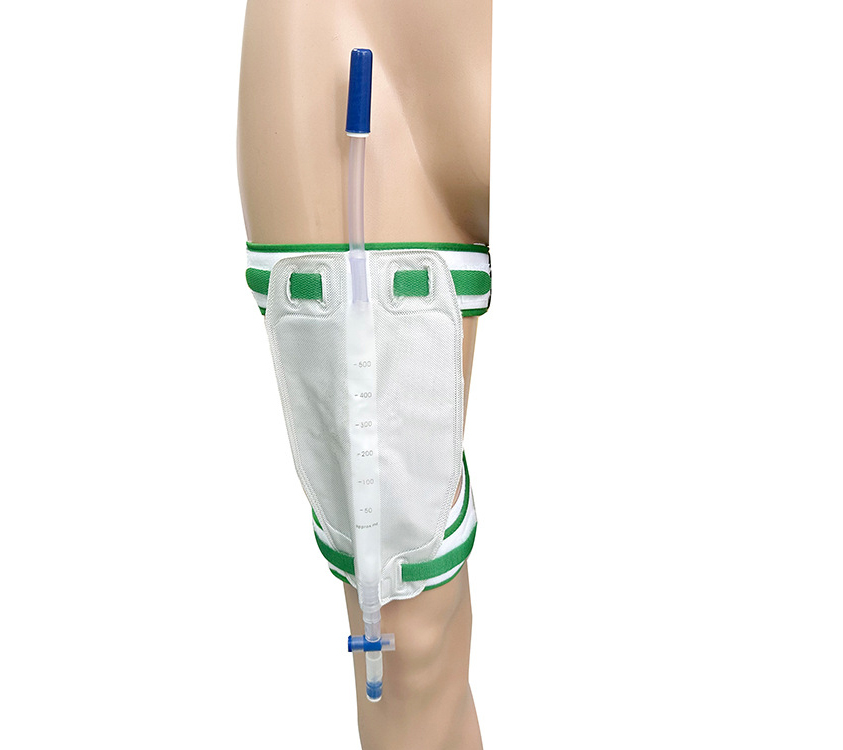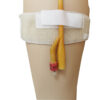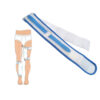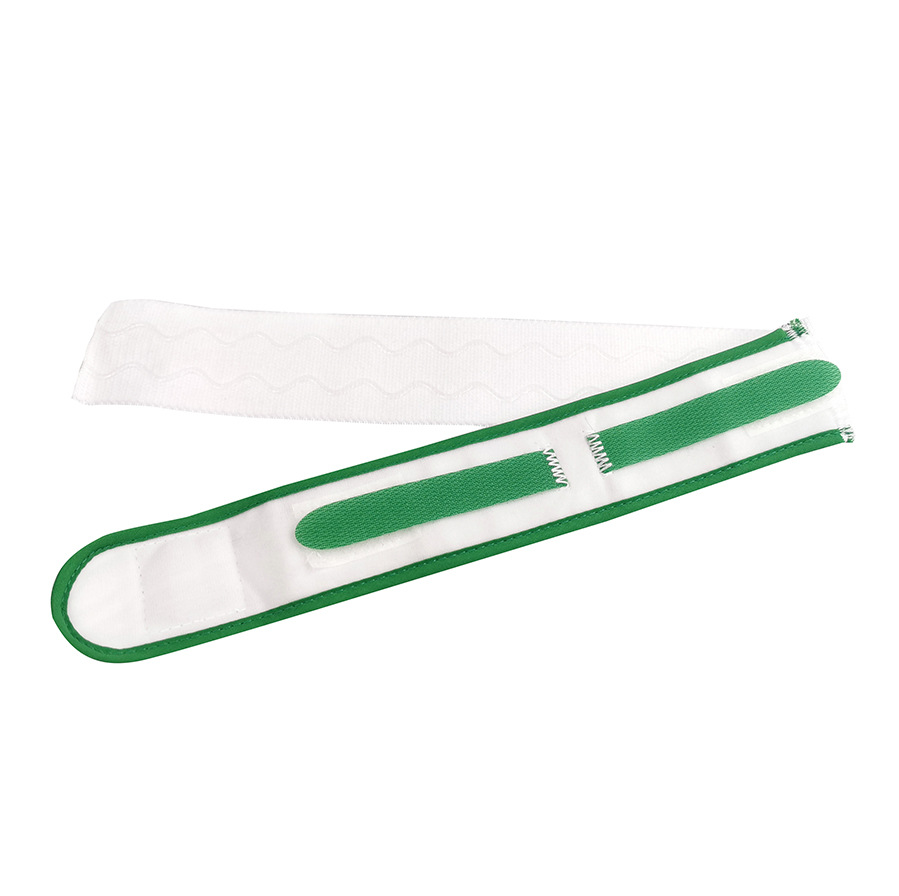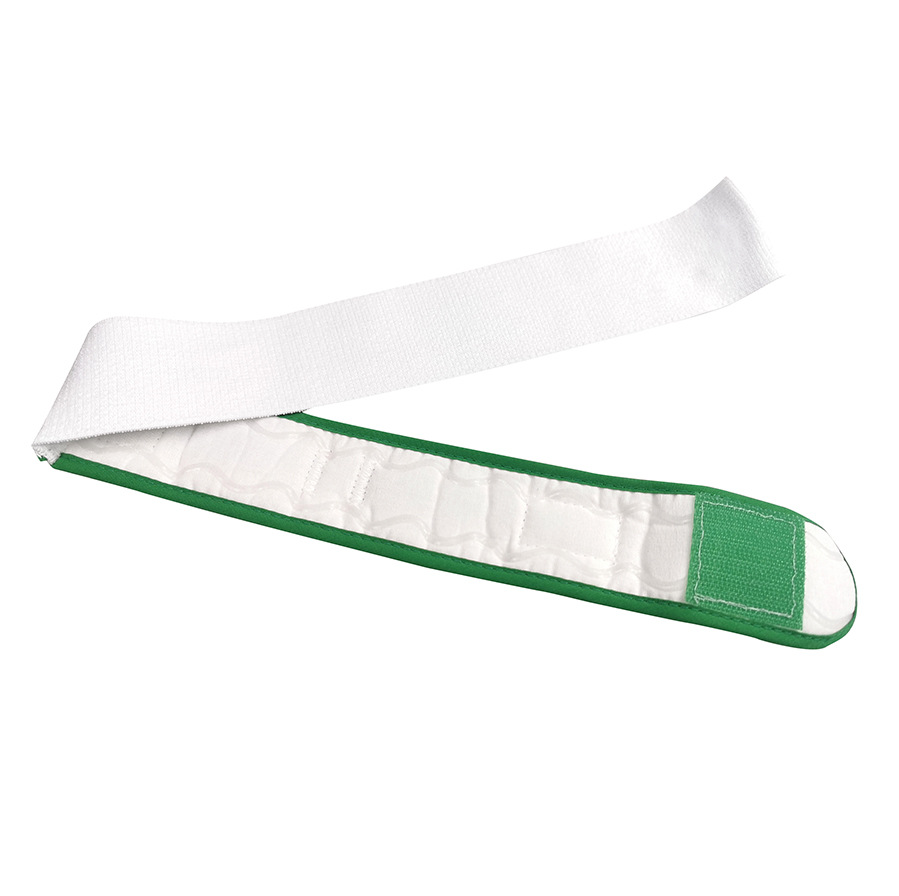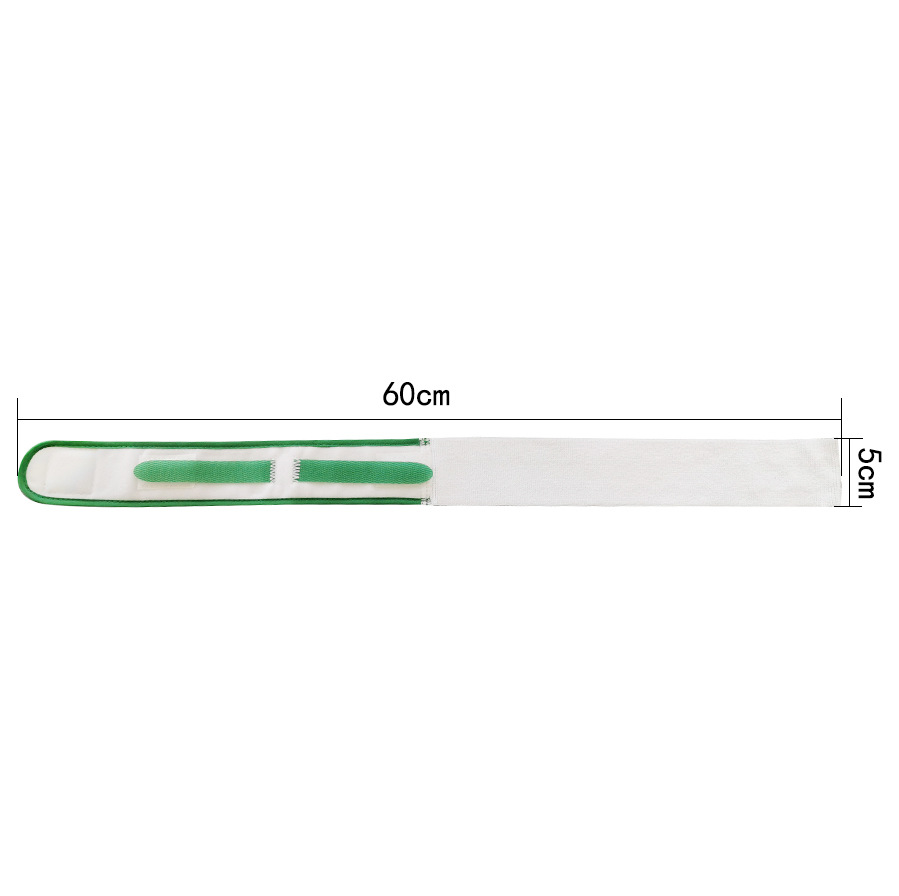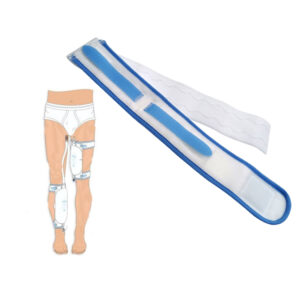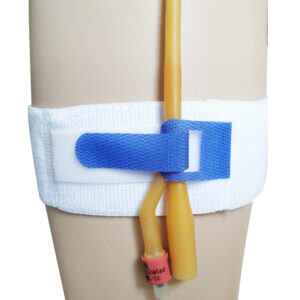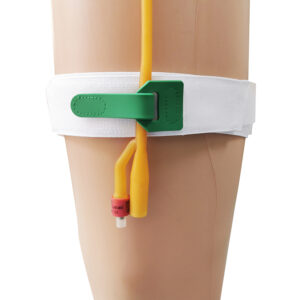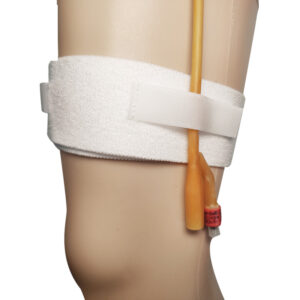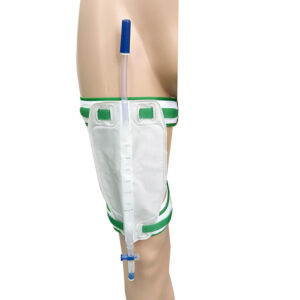Instructions:
Preparation and Assessment
- Inspect the fixation belt for integrity and ensure the Velcro adhesive functions properly
- Measure the circumference of the patient’s fixation site to select an appropriately sized belt
Catheter Positioning
- Adjust the drainage catheter to maintain a natural curve, avoiding kinks or tension
- Ensure the skin at the catheter exit site is clean and dry
Belt Installation
- Place the catheter into the dedicated slot or clip of the fixation belt
- Wrap around the limb or torso while maintaining a gentle curvature of the catheter
Tension Adjustment
- Tighten the belt until it fits snugly against the skin without pressure (leave a one-finger gap)
- Secure the Velcro symmetrically to prevent catheter slippage or displacement
Routine Maintenance
- Check the belt position and skin condition every 8 hours
- Replace immediately if moisture, contamination, or skin redness is observed
Precautions:
- Avoid fixing near joint movement areas
- Increase inspection frequency for emaciated/edematous patients
- Use the “one-hand fixation technique” during replacement to prevent catheter dislodgement
(Select specialized belts like abdominal or limb styles based on catheter type)

